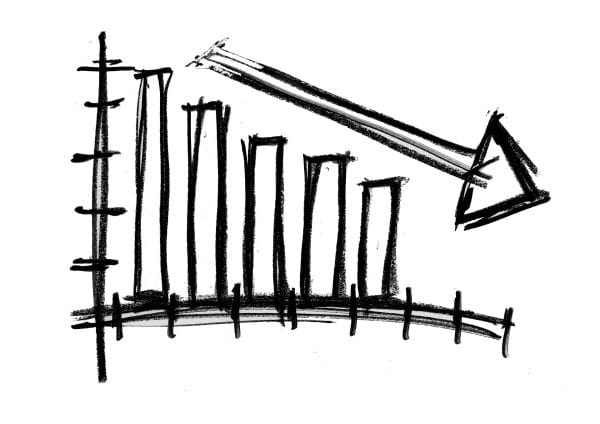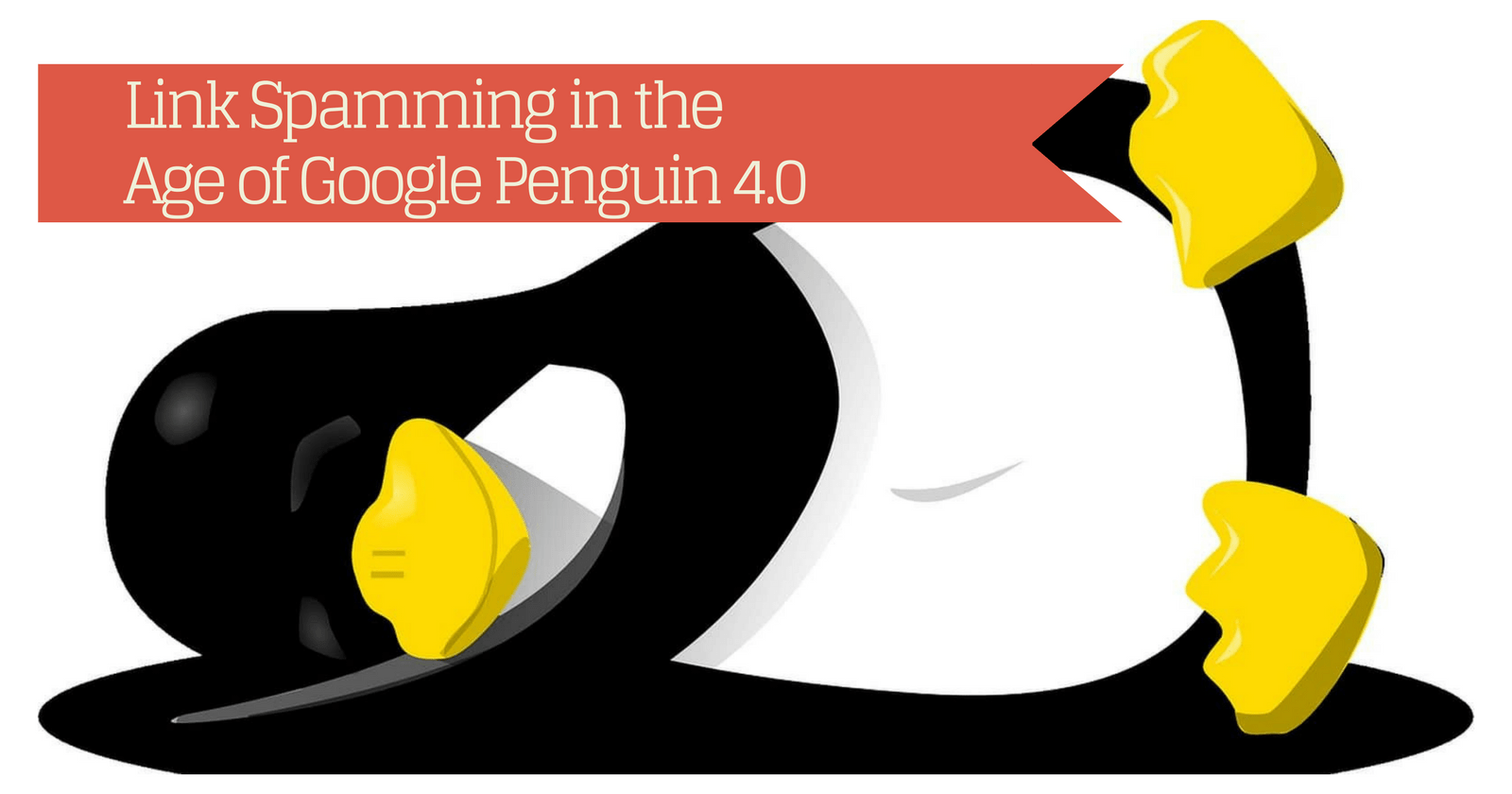Some argue that link spam is booming due to the Google Penguin 4.0 release.
There seems to be a perception this iteration of Penguin is kinder and gentler to spammers.
This, in turn, has purportedly led to a link spam renaissance.
However, to fully understand the current algorithm, it’s helpful to understand the history of Penguin
The History of Google Penguin
Penguin, when first rolled out, was unlike any previous Google algorithm update. Introduced on April 24, 2012. It was designed to combat and demote websites engaged in link schemes.
Here’s how the Penguin algorithm has evolved:
- Penguin 1 rolled out on April 24, 2012 (impacting around 3.1 percent of queries)
- Penguin 2 rolled out on May 26, 2012 (impacting less than 0.1 percent of queries)
- Penguin 3 rolled out on October 5, 2012 (impacting around 0.3 percent of queries)
- Penguin 4 (AKA Penguin 2.0) rolled out on May 22, 2013 (impacting 2.3 percent of queries)
- Penguin 5 (AKA Penguin 2.1) rolled out on October 4, 2013 (impacting around 1 percent of queries)
- Penguin 6 (AKA Penguin 3.0) first rolled out on October 17, 2014 (impacting less than 1 percent English queries). On December 1, 2014 Google confirmed that the update was still rolling out with webmasters continuing to report significant fluctuations.
- Penguin 7 (AKA Penguin 4.0), the latest version rolled out on September 23, 2016

The Original Google Penguin Algorithm
Google’s Penguin algorithm ran independently from the core algorithm prior to Penguin 4.0. It was the first time that Google placed a negative value on spammy links, rather than just ignoring them.
Penguin updates and refreshes were completely random. This created a huge problem for websites demoted by Penguin. Even after cleaning up link spam, little, if any, improvement ever occurred before an algorithm refresh.
The Google Penguin 4.0 Algorithm
Penguin 4.0 is now baked into the core Google algorithm.
Bad links are once again, for the most part, ignored, rather than assigned a negative value.
Because Penguin now runs in real time, it won’t take several months or even a year to recover.
The Net Effect
Because the latest Penguin algorithm runs in real time, one should, in theory, be able to determine pretty quickly if a particular link scheme is working.
Without the risk of adding negative value to a link profile, some webmasters are taking a more aggressive approach to acquiring spammy links.
There’s no question that some have had success in manipulating the algorithm.
That said, people have been successfully manipulating the algorithm since its inception, and I question whether it’s really any worse now than ever before.
3 Popular Link Spam Techniques
The most egregious link spam seems to come in three forms.
1. Guest Posts
It’s a safe bet that you get emails like the following one that I received, on a regular basis:
Hi,
I am a full time guest post service provider. I charge one time for permanent post.
I have more than 2000+ sites (DA 30+,DA 60+ and above) where I can publish articles at an affordable rate.
Some sites of my list-
- com
- com
- com
- com
- org
- com
- org
If you are interested please contact me. Waiting for your response.
Regards!
Redacted Name | Online Media Publisher
Redacted | India
You know who else gets these emails? The Google spam team.
Even if these links do provide some value today, (which is debatable) the likelihood of them providing any lift over the long haul is nil. Guest post abuse has been on Google’s radar for years and anyone who engages in the practice does so at their own peril.
2. Private Blog Networks
Once again, I have to look no further than my Inbox for an example:
Hello Fellows,
Would you like to take advantage of PBN Links and more than 30+ types of links and social media optimization spread over a wide range of anchors?
We continuously working for ranking over 600+ sites from the last couple of years found more active now; would you be interested in giving it a go?65% FLAT DISCOUNT
Here’s What You Get When You Purchase:
– Unique & Hand-written contents – The most important factor
– Natural indexing blogs – We don’t ping them at all
– Trust flow and DA are high enough to bring your site good juice (The Average Domain Authority 20 – 25+ and Trust Flow 10+)
– Every Link is Unique IP and we have a variety on links lookup.
– Whois Protected and NO Footprints
– Popular crawler blocked.Coupon Code: LINKED
Your business – your gain!
Regards,
Redacted
Tempting, right?
My favorite part is the discussion of no footprints (like every site being whois protected and blocking “popular crawlers”)
Do you seriously think Google can’t spot PBNs? The chance of building long-term success with a PBN strategy is slim to none.
3. 301 Redirects
Most PBNs are built using expired domains with legacy backlinks.
Some webmasters don’t bother with the trouble of building out a network and choose instead to simply redirect an expired domain to their site.
I recently had had a prospective client find out the hard way how this can backfire.
The Myth of the Toothless Penguin
If you were paying close attention above, I mentioned that bad links are, for the most part, ignored. But not always.
Even before Penguin rolled out, Google had spam filters in place to detect and demote websites engaged in spammy link activity.
Those filters still exist, today, as chronicled in this email exchange with a prospective client:
Hey Chuck,
I hope you’re doing well. I’ve got an ongoing contract gig with a small business called Redacted.com. As you can probably guess from the name, they help people with (redacted – insert the trophy phrase of your choice here) I’m proposing an approach to SEO for their site and want to include link building as a tactic. They’ve used someone else for that in the distant past… But I’ve always liked you and the results you’ve been able to get, and would at least like to propose using your company to them.
Could you let me know what your pricing looks like these days for doing link building …
Thanks,
Prospective client
My reply:
Hi Prospect
Great to hear from you. I’m certainly familiar with that highly competitive niche. 🙂
Attached is an overview of all services offered. Yada, yada, yada…
Thanks again for the opportunity
Cheers
Chuck Price
A few email exchanges later…
Hi Chuck,
I appreciate your feedback.
We 301 redirected another site (we) own in April that gave us a very good bump with (Trophy phrase) ranking improving (from nowhere to 23rd). And if you look at the competitive metrics around it, they’re relatively low … given the success we’ve had with the redirect (we’re hoping to) to bump up into the 6 – 10 range. Does that seem unrealistic? If so, ballparking it, what do you think it’d take to get us in that range, 6 – 10?
Thanks,
Prospective Client
I always get nervous when clients decide to “help” us out with link building and go rogue.
It’s particularly difficult when the spammy tactic gets some traction.
Before you go out and buy a bunch of expired domains to redirect, check out the next email:
Hi Chuck,
I just wanted to run something by you that may/may not impact our project. So our focus is on the keyword (trophy phrase) largely due to its high search volume and kind of a recent bump up in position that seemed to make hitting 1st page a possibility. But lately the position has started to tank a little.
On June 14th, we were in 18th position, but 4 days later we had slid to 71st somehow. I’d like to get your thoughts on why we’d have such a pronounced shift in position. And looking at this trend line for (Trophy Phrase) from Search Console it looks like we had a drop at the beginning of May that lasted 2 weeks, that I hadn’t picked up on before.
It seems to me, if we’re in the 18 – 22 range then 1st page is at least a possibility, but at 70 it may not be. The one thing we did that could have impacted things was a domain redirect for the exact match domain site to [redacted].com on 6/9.
Please let me know your thoughts on possible causes, and if this change, or volatility, changes your thoughts on the project.
Thanks,Prospect
Well, it didn’t take a lot of research to figure out what the problem was, and I laid it out very directly for the prospect in my reply:
Hi Prospect,
Well – if you had asked me what you could do to get smacked by the Penguin algorithm, I would have suggested doing these 301 redirects. Look at the Spammy backlink profile for the exact match domain.
I strongly encourage you to remove the 301 redirects & get back to me when this reverts.
Regards,
Chuck Price
And our final email exchange
Hi Chuck,
I just wanted to check back in on this. What position do you think we need to get back to with (trophy phrase) to initiate this project? We’re back up to 35 as of 2 days ago. Do we need to be much closer to ~ 22, or so, where we were when we started discussing this?
Thanks,
Prospect
tl:dr
Spammy tactics like 301 redirects can work – but often it’s a temporary lift.
In this case, the heavy density of exact match anchor text links was not ignored by Google.
In fact, the website was demoted for having those links. Once the redirect was removed, the website recovered.
Moving Forward in a Penguin 4.0 World
The biggest changes with Penguin 4.0 include it being part of the regular algorithm and running in real time.
Equally important is the way that toxic links are treated – usually given no value rather than a negative value.
Link audits and disavow file submissions should now result in faster relief.
Penguin is an algorithmic event, not a penalty, therefore a reconsideration request isn’t necessary (or even possible).
The Takeaway
- Most “Toxic” links no longer carry a negative value. They will either pass a positive or neutral value. A notable exception is exact match anchor text links. If one has “Too many” it’s possible to trip a filter and find yourself 30, 40 or 50 places further down the SERPs
- A backlink analysis is still important. It’s still a good idea to check your backlink profile to ensure it is natural and not spammy.
- Get rid of bad links. If you don’t have the ability to get a link removed, you can still disavow any link via the Google Search Console
- Keep an eye on website redirects. In addition to creating a problem like the one highlighted above, one can redirect an existing penalty to a new domain, as well.
The costs associated with a Penguin recovery can far outweigh the “savings” associated with building a website on a spammy foundation
Image Credits
Featured Image: Pixabay (modified by editor)
In-Post Image: Pixabay





